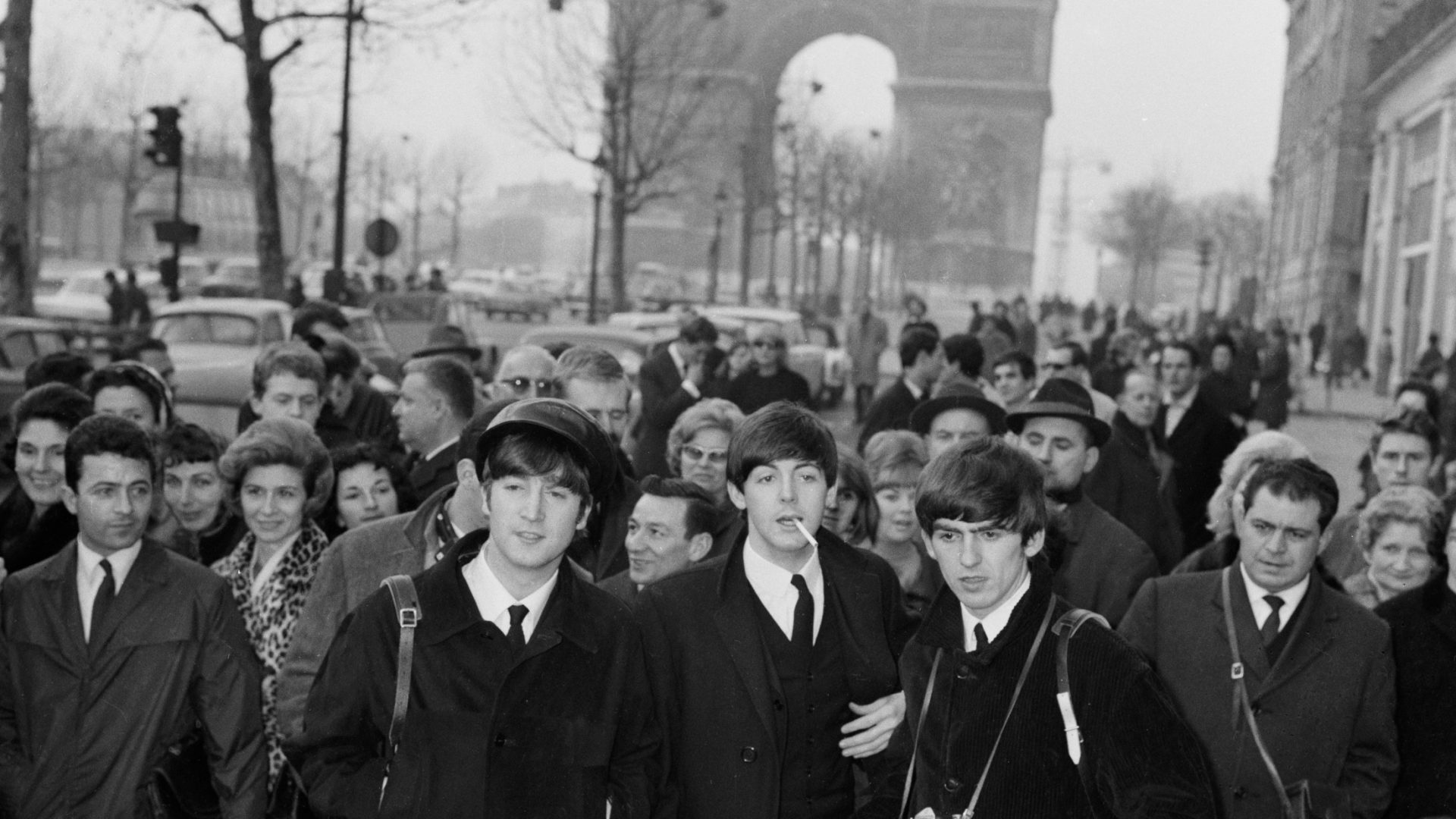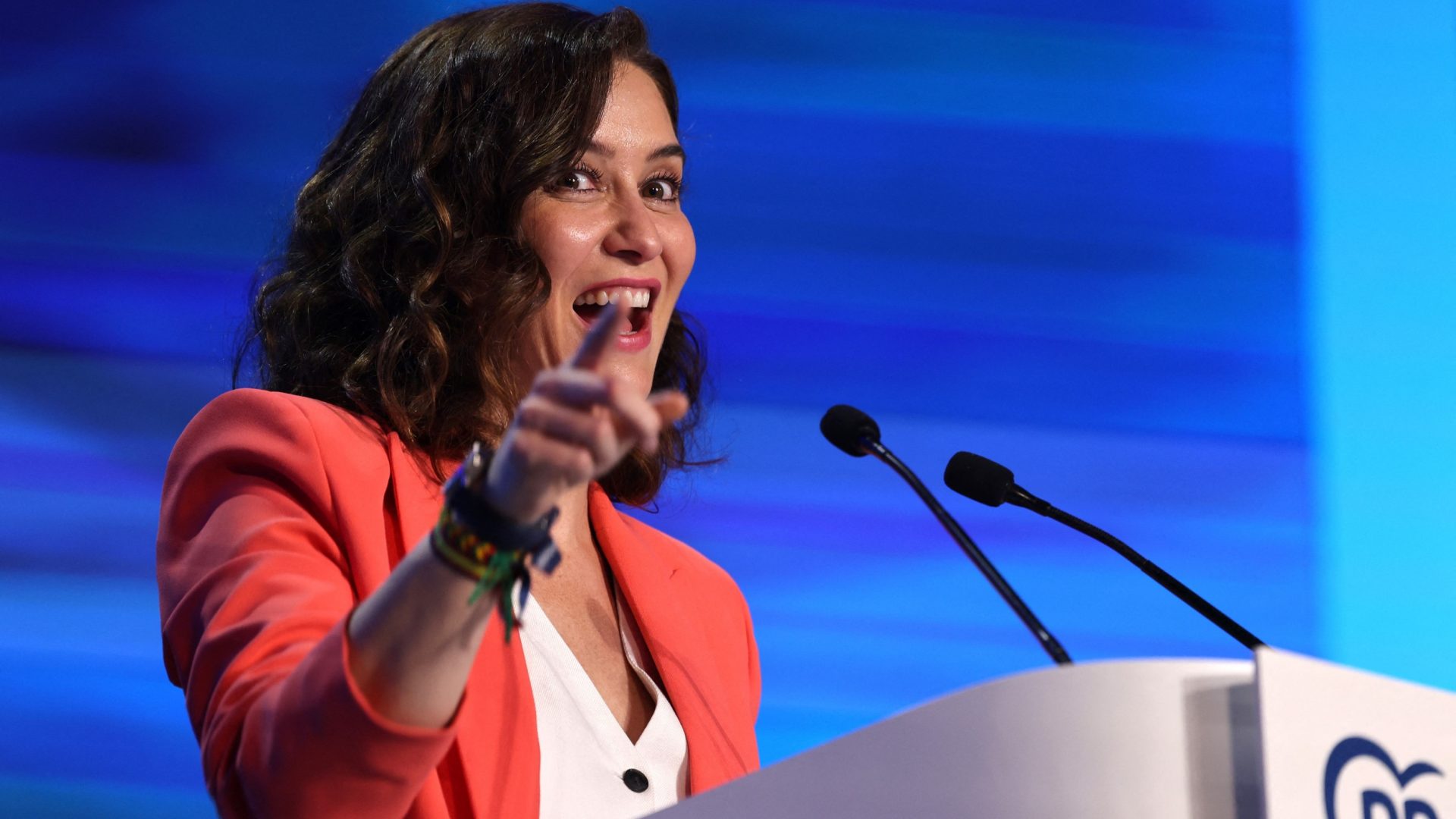Late night in Paris, January 1964. Five Liverpudlians – elated, exhausted – are sitting on a bench by the Seine. The four youngest are trying to persuade the eldest, their driver and personal assistant Neil Aspinall, to dive in.
“In those days we’d promise Neil £20,000 if he’d go for a swim,” Ringo Starr later remembered. “He’d go for a swim and (afterwards) we’d say, ‘No, sorry.’”
Alas, not even the newly discovered photographs of the Beatles in Paris taken by Paul McCartney reveal whether Aspinall actually took the plunge on Thursday, January 16, but his companions definitely made a great leap forward. The Fab Four had just completed their first live appearances in the city of light, at its prestigious l’Olympia theatre. On returning to the King George V hotel, they had been informed that I Want To Hold Your Hand had gone to the top of the American charts – their first US no 1.
And then the evening had taken a surreal turn, with their producer, George Martin, taking the group and their manager, Brian Epstein, to, in George Harrison’s recollection, a restaurant where “the bread rolls were shaped like penises, the soup was served out of chamber pots and the chocolate ice cream was like a big turd. And the waiter came round and tied garters on all the girls’ legs.” After that, a dip in the Seine must have sounded positively mundane.
The Beatles would go on to play another 17 days of concerts in the French capital. But in a way the gigs were the least interesting aspect of their time there, which arguably cemented Paris in second place – albeit some distance behind Hamburg – when it comes to the most significant mainland European destinations in the group’s story.

On a previous visit in 1961, John Lennon and McCartney had been given their “mop top” haircuts for the first time, and in September 1963 Lennon had taken his first holiday as a celebrity, a belated honeymoon with his first wife, Cynthia. Now, they returned on the cusp of global stardom for a three-week stay, in which they would write six songs for their debut film, including the future smash Can’t Buy Me Love, and obtain a copy of The Freewheelin’ Bob Dylan from a French DJ; an album that would leave a marked influence on their future work.
Photographing it all on a 35mm camera was McCartney, whose images – part of a trove of nearly 1,000 rediscovered during lockdown – appear in the new book 1964: Eyes of the Storm. They intimately record the months towards the end of 1963, when Beatlemania first erupted in the UK, and the beginning of 1964, when they left France for America and became the most famous people on the planet.
Paris had offered a relative respite after spending most of 1963 criss-crossing the UK and Ireland, ending in a run of panto-style Christmas shows in London. Following a warm-up in Versailles on January 15, “Les Beatles” settled into a steady routine, performing two sets a day at l’Olympia on Boulevard des Capucines until February 4, with only two days off. Staged by music producer and l’Olympia owner Bruno Coquatrix, the shows comprised eight Beatles songs – From Me To You, Roll Over Beethoven, She Loves You, This Boy, Boys, I Want To Hold Your Hand, Twist And Shout and Long Tall Sally – and also sets by the American Trini López and French chanteuse Sylvie Vartan. Other than the Cavern and Hamburg, this was the longest run for the Beatles at any single venue.
Their base was the art deco splendour of the George V hotel, described by Harrison in The Beatles Anthology (2000) as “the most enormous hotel suites, all with grand marble bathrooms. We were given two adjoining suites, with rooms that went on for ever”.
Lennon and McCartney had little time off. Sharing one suite with an upright piano, they set to work on songs for A Hard Day’s Night, which would begin shooting on their return from America.
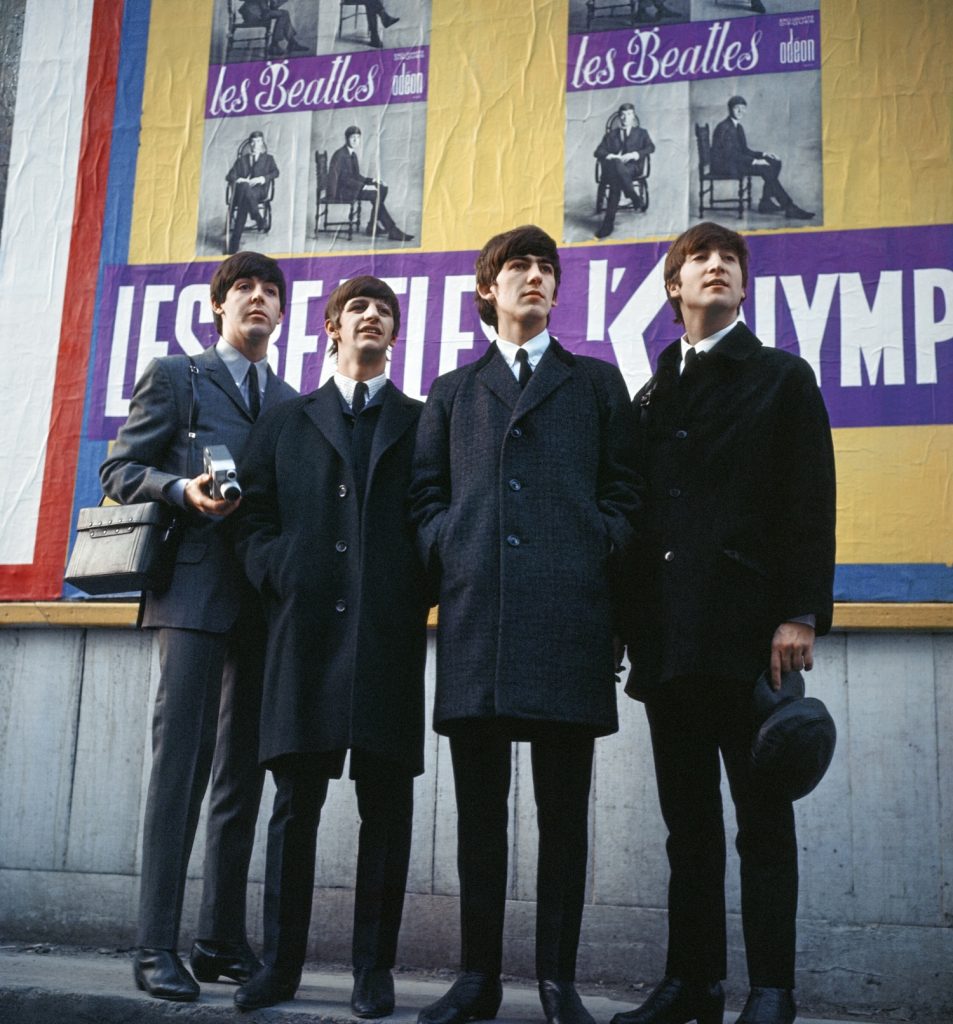
If there was little time for sightseeing, the two could be content that they had been there, done that. In late 1961, Lennon was given £100 as a 21st birthday present and decided to hitchhike to Spain with McCartney. Wearing leather jackets and drainpipes, they used bowler hats as a gimmick to attract the attention of passing lorry drivers. But by the time they arrived in Paris they were tired and, intrigued by the city, decided to spend the week there instead.
They sat out at bars near the Avenue des Anglais, buying capes and pantaloons and striking artsy poses in Parisian cafes. All this while drinking vin ordinaire, which they thought tasted like vinegar. They visited Montmartre, taking in the fashions and “spongeing up experiences”, according to McCartney in Eyes of the Storm. They made their first visit to l’Olympia to attend a concert by Johnny Hallyday, France’s “answer to Elvis”.
By chance they ran into Jürgen Vollmer, a friend from Hamburg now working as an assistant to the photographer William Klein. Vollmer was sporting a flattened-down hairstyle with a fringe, Mod-style, and the young Beatles immediately asked him to fashion their hair – “hack would be a better word”, quipped Lennon – into the same style.
Said McCartney in Anthology: “We sat down in his hotel, and he just got it – the ‘Beatle’ cut! For the rest of that week, we were like Paris existentialists. Jean-Paul Sartre had nothing on us.”
By the time the pair returned to Paris, the Beatles were stars at home. McCartney notes in his new book: “The flight to Paris was certainly the biggest trip we’d done as a band, and there were several thousand fans at London airport to see us off. When we landed, though, it felt like there were more journalists waiting to greet us than fans, so we knew we’d have our work cut out there, but eventually managed to win the French over.”
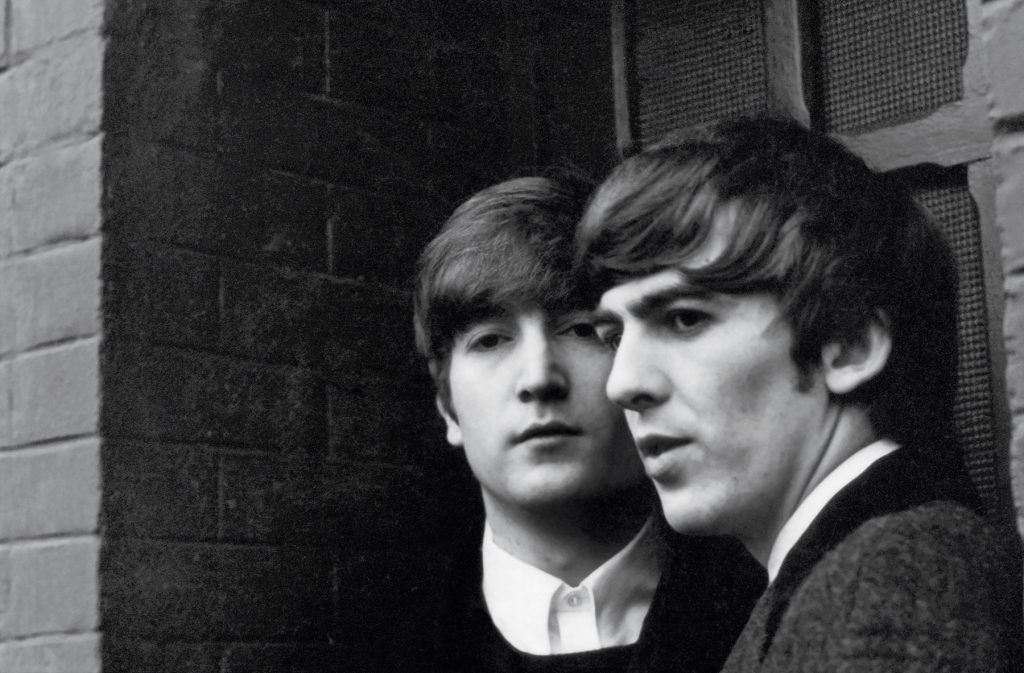
The opening evening was marred in part by over-eager photographers aggressively jostling for exclusive shots of these new English sensations. Then when the amps overloaded, it led to a lengthy delay while the power was reconnected. Harrison also noted that the audience at l’Olympia on the opening night was nothing like any audience they’d had before: “They were much older people wearing tuxedos, as though they’d come to see a film premiere or watch a ballet. We were disappointed there weren’t any of the nice French girls we’d heard so much about. They were all kept at home in those days, because of the strict catholicism in France.”
Any disillusionment was soon forgotten when Epstein received a telegram from Capitol Records in America: “Attention: The Beatles. Congratulations boys. Number one in the US. I Want To Hold Your Hand.”
Says McCartney in Eyes of the Storm: “We ran around the hotel room and screamed and danced. I remember leaping on Mal Evans, our roadie, who was a big guy. I jumped on his back, and we had a lot of fun celebrating.”
Though pictures of that wild night are sadly absent from the new book, McCartney says the first thing he notices in his photographs of the trip is the spontaneity of the French capital. “When we got to Paris, we were tourists, and that’s reflected in some of my photos,” he writes. “We were driven around to get to photo shoots or to the theatre and, on our way, I might see a crowd in the street that looked very French. There would only be a few seconds to decide whether something like that might make an interesting photo, often based on the lighting or the situation.
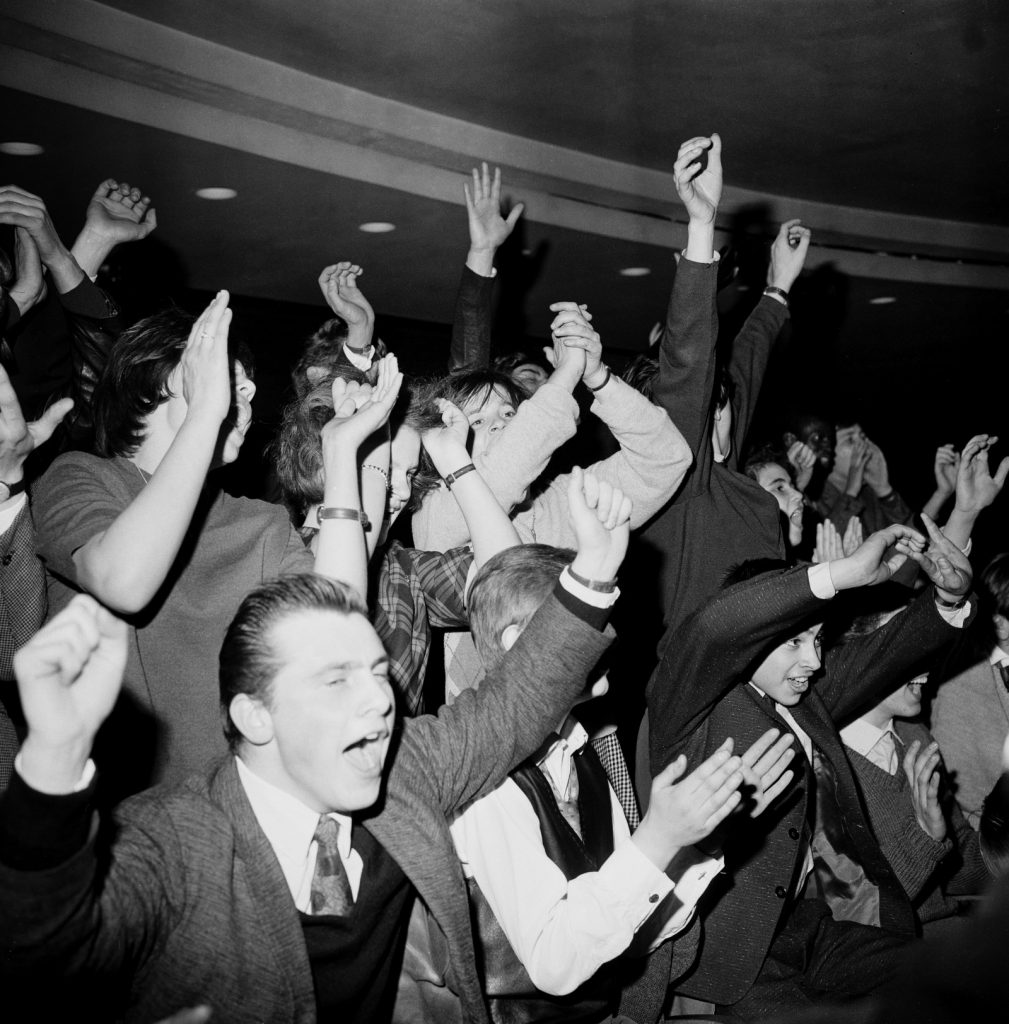
“So here, instead of just standing in front of the Arc de Triomphe and taking a picture, I’ve caught it in the mist through a car window. It’s more of an emotional, intuitive response to the scene, rather than something posed or planned.
“I also admired the cinematic style of French New Wave films like François Truffaut’s Jules et Jim, which had been a big hit with us, so perhaps I was trying to incorporate that aesthetic into the photos I was taking.”
While in Paris, the Beatles also recorded German-language versions of She Loves You and I Want To Hold Your Hand, having enough studio time left over to record the backing track, with a guide vocal, to Can’t Buy Me Love. Lennon started writing his second book, A Spaniard in the Works, in the George V, while Harrison worked with the Daily Express journalist Derek Taylor – later to become head of press at Apple – on a tour diary. One entry, at the start of the French trip, gives a hint of what was about to come: “Tonight we conquered Versailles, and by implication, all of France fell… How New York will view our visit, we can only guess!”
Paul McCartney’s 1964: Eyes of the Storm is available from Allen Lane, an imprint of Penguin Books. His photographs are on display at a special exhibition at the National Portrait Gallery until October 1

